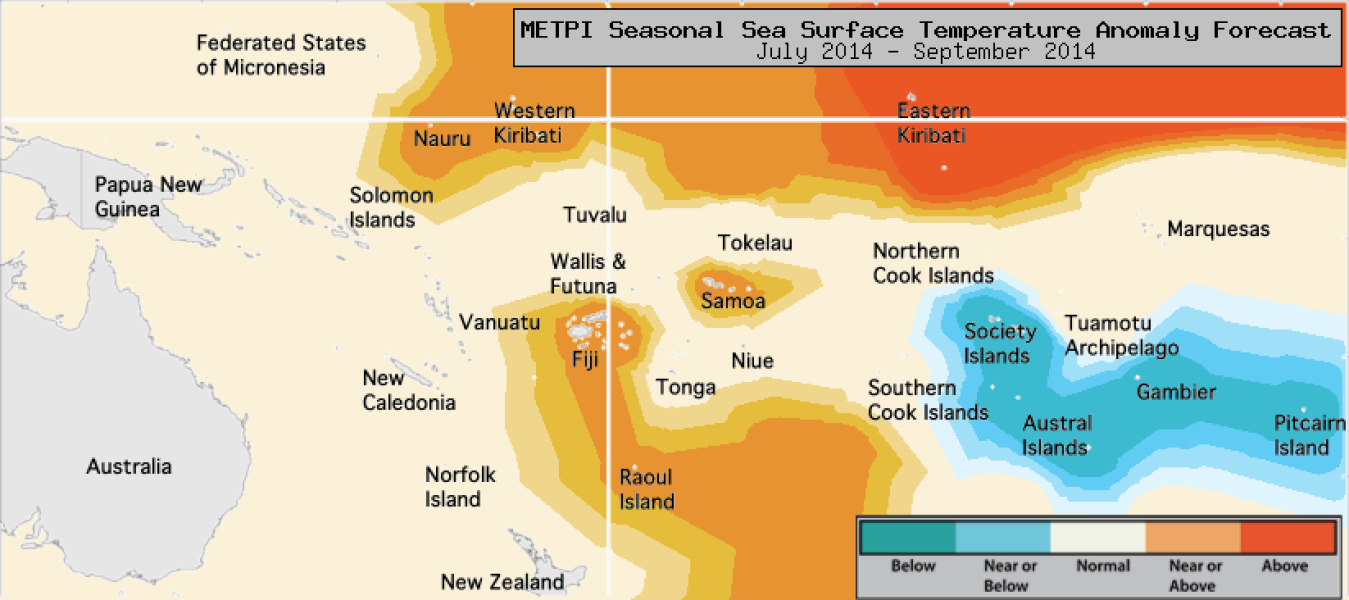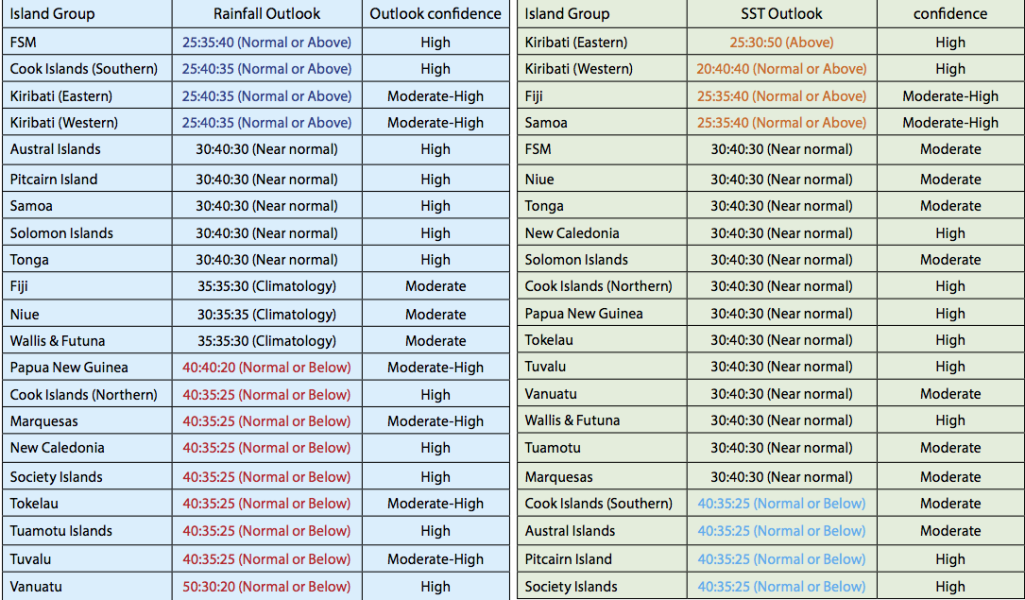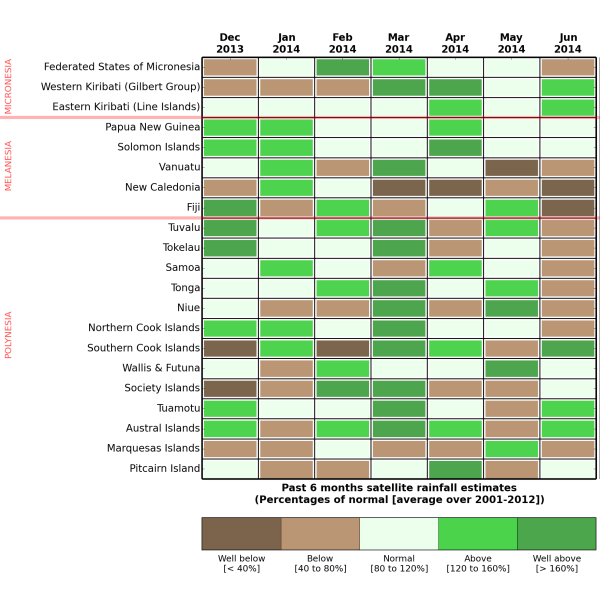The dynamical forecast models are predicting rainfall patterns generally consistent with the expected development of El Niño over the July – September 2014 period.
The ITCZ is forecast to be intensified towards the Equator, and large areas of the south Pacific at subtropical latitudes are still forecast to be drier than normal.
Near or above normal rainfall is forecast for the Federated States of Micronesia, the Southern Cook Islands, Eastern Kiribati and Western Kiribati.
Near normal rainfall is expected for the Austral Islands, Pitcairn Island, Samoa, the Solomon Islands and Tonga.
Normal or below normal rainfall is forecast for Papua New Guinea, the Northern Cook Islands, the Marquesas, New Caledonia, the Society Islands, Tokelau, the Tuamotu archipelago, Tuvalu and Vanuatu.
No clear guidance is available this month for Fiji, Niue and Wallis and Futuna.
The global model ensemble forecast for SSTs indicate a pattern consistent with El Niño, with higher than normal SSTs in the central and eastern Equatorial Pacific and lower than normal SSTs in the southeastern Pacific.
Above normal SSTs are forecast to persist from previous months east and northeast of New Zealand. Above normal SSTs are forecast for Eastern Kiribati.
Near normal or above normal SSTs are forecast for Western Kiribati, Fiji and Samoa.
Normal or below normal SSTs are forecast for the southern Cook Islands, the Austral Islands, Pitcairn Island and the Society Islands.
Near normal SSTs are expected elsewhere.
The confidence for the rainfall outlook is generally moderate to high. Climatological probabilies (for Fiji, Niue and Wallis & Futuna) are typically associated with moderate confidence.
Futuna) are typically associated with moderate confidence. The average region–wide hit rate for rainfall forecasts issued in July is 65 %, two points higher than the average for all months combined.
Confidence for the SST forecasts is moderate to high, with greater uncertainty in the southeastern Pacific.
The figure on the bottom right presents the last six months rainfall anomalies for each Island group alongside the latest ICU rainfall forecast for the July-September 2014 period.
The past 6 months rainfall anomalies are based on the near-real-time TRMM (Tropical Rainfall Measurement Mission) merged satellite product available from http://trmm.gsfc.nasa.gov. The data has been downloaded and available on the link below:
ftp://disc2.nascom.nasa.gov/data/TRMM/Gridded/Derived_Products/3B42RT/Daily
For each Island group, the monthly value is derived from the average of all grid-points (or "pixels") in the TRMM Dataset that intersect a coastline, to ensure that the values correspond as closely as possible to rainfall on land, and excluding rainfall falling on ocean surfaces.
The climatology used has been established over the 2001 – 2012 period. The categories ("Well-below", "Below", etc.) are determined according to the percentage of the normal rainfall for that month. The thresholds are indicated in the colour-bar at the bottom: to give an example, "Well-below" normal rainfall means the rainfall for that month was under 40 % of the normal rainfall, "Below" normal rainfall means that between 40 and 80 % of normal rainfall was received, etc.
IMPORTANT NOTE:
Please note that, while we use the same colour-scheme for the past rainfall anomalies and the ICU forecast, the type of information presented is different. In the case of the past 6 months, actual rainfall has been estimated by satellite, and the categories are well-defined by monthly estimated rainfall compared to the long-term mean. The ICU forecast, on the other hand, is probabilistic: it indicates the likelihood (percentage chance) of rainfall being at, above, or below normal for the season as a whole. When the percentage chances in two categories are close to each other, we indicate both categories: for example if the forecast is for 35 % chance of receiving below rainfall, and 40 % chance of normal rainfall, the outcome is "Normal or below".




